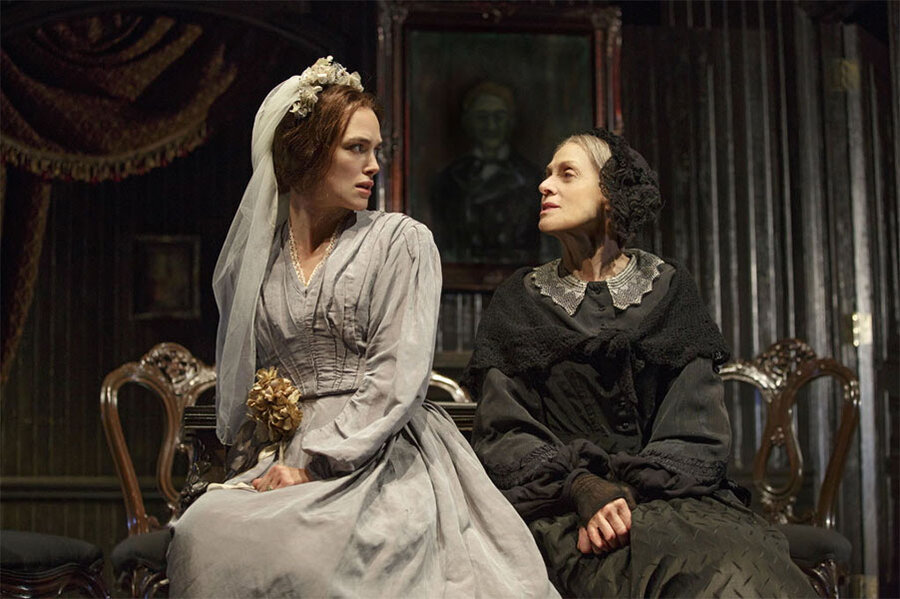Keira Knightley's performance in 'Therese Raquin' is far better than the production
Loading...
About a quarter through the new and uneven Broadway revival of "Therese Raquin," you begin to wonder why Keira Knightley has put herself through this.
Her Broadway debut seems to be about playing a lonely, detached, and diffident girl in a slow-moving parlor play. She looks wan. She gazes through windows. She generally moons about.
Then the heat gets turned up.
To be more specific, her husband's hunky friend Laurent – Matt Ryan, channeling Colin Farrell – arrives. Knightley's Therese can't resist this can't-be-tamed, artistic type, despite her wedding ring. He can't help himself, either.
On the menu now is adultery but also murder, violence, and misery. Now you know why Knightley is here.
The Roundabout Theatre Company production, which opened Thursday at its Studio 54 theater, is an adaption by Helen Edmundson of the 1867 novel by Emile Zola. It has some Edgar Allan Poe and Shakespeare in its DNA, but the melodrama is too thick to swallow.
Director Evan Cabnet has encouraged the humor, passion, and the horror, but all those elements stewing together over the two-and-a-half-hour play eventually start to spoil. The horror doesn't really stay sustained, the love curdles oddly, and the humor breaks the momentum of both. Some of the worst sound effects heard on Broadway don't help.
Knightley gives it her all.
As her sickly, dismissive husband Camille, Gabriel Ebert is superb and Ryan is strong as the overwhelmed lover, but Judith Light as Camille's mother is too, well, nice. Light is supposed to be overbearing and sour but comes across as simply doting. Her triumph at the end is muted.
Perhaps the show's biggest star isn't Knightley at all but Beowulf Boritt, whose set design is remarkable and sublime. It's not every day you see a rowboat floating on a Broadway stage but Boritt has embraced the water as a key element in Therese's psyche and it literally shimmers.
He and lighting designer Keith Parham have mixed airy, empty space for the country – an Impressionistic image of moss and rock fills the back wall – and an oppressive, dark wood interior for life after her marriage. An attic where the lovers meet is literally floating, as if powered by love itself.
But love is not enough, alas. This couple, like the play, has to come down to earth sometime, and, when they do, they're fully prepared for murder. You might wish they'd hurry up: This production never feels vital enough to care about anyone.





